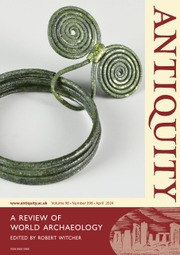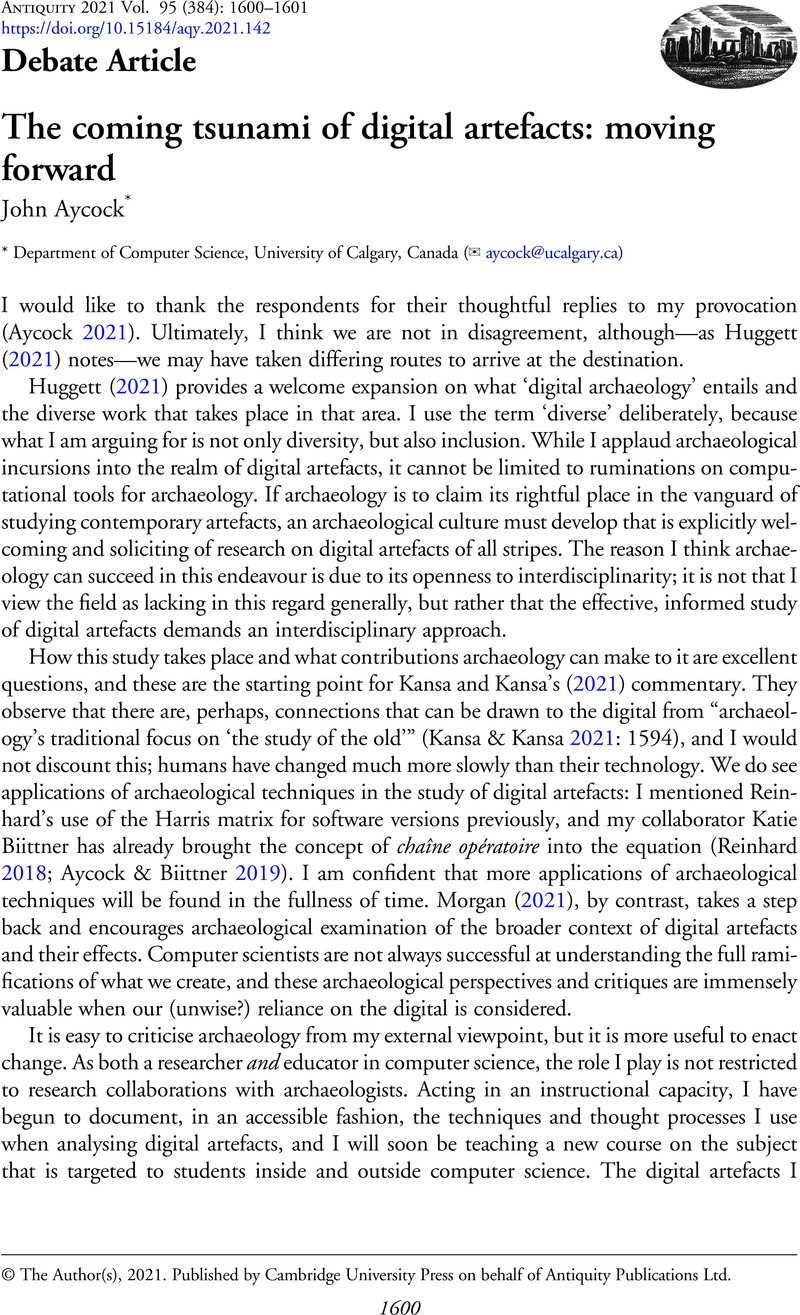I would like to thank the respondents for their thoughtful replies to my provocation (Aycock Reference Aycock2021). Ultimately, I think we are not in disagreement, although—as Huggett (Reference Huggett2021) notes—we may have taken differing routes to arrive at the destination.
Huggett (Reference Huggett2021) provides a welcome expansion on what ‘digital archaeology’ entails and the diverse work that takes place in that area. I use the term ‘diverse’ deliberately, because what I am arguing for is not only diversity, but also inclusion. While I applaud archaeological incursions into the realm of digital artefacts, it cannot be limited to ruminations on computational tools for archaeology. If archaeology is to claim its rightful place in the vanguard of studying contemporary artefacts, an archaeological culture must develop that is explicitly welcoming and soliciting of research on digital artefacts of all stripes. The reason I think archaeology can succeed in this endeavour is due to its openness to interdisciplinarity; it is not that I view the field as lacking in this regard generally, but rather that the effective, informed study of digital artefacts demands an interdisciplinary approach.
How this study takes place and what contributions archaeology can make to it are excellent questions, and these are the starting point for Kansa and Kansa's (Reference Kansa and Kansa2021) commentary. They observe that there are, perhaps, connections that can be drawn to the digital from “archaeology's traditional focus on ‘the study of the old’” (Kansa & Kansa Reference Kansa and Kansa2021: 1594), and I would not discount this; humans have changed much more slowly than their technology. We do see applications of archaeological techniques in the study of digital artefacts: I mentioned Reinhard's use of the Harris matrix for software versions previously, and my collaborator Katie Biittner has already brought the concept of chaîne opératoire into the equation (Reinhard Reference Reinhard2018; Aycock & Biittner Reference Aycock and Biittner2019). I am confident that more applications of archaeological techniques will be found in the fullness of time. Morgan (Reference Morgan2021), by contrast, takes a step back and encourages archaeological examination of the broader context of digital artefacts and their effects. Computer scientists are not always successful at understanding the full ramifications of what we create, and these archaeological perspectives and critiques are immensely valuable when our (unwise?) reliance on the digital is considered.
It is easy to criticise archaeology from my external viewpoint, but it is more useful to enact change. As both a researcher and educator in computer science, the role I play is not restricted to research collaborations with archaeologists. Acting in an instructional capacity, I have begun to document, in an accessible fashion, the techniques and thought processes I use when analysing digital artefacts, and I will soon be teaching a new course on the subject that is targeted to students inside and outside computer science. The digital artefacts I study, and the ways I study them, are certainly far from exhaustive, but these initiatives offer methods to begin bridging disciplinary divides. I hope other efforts will follow.



